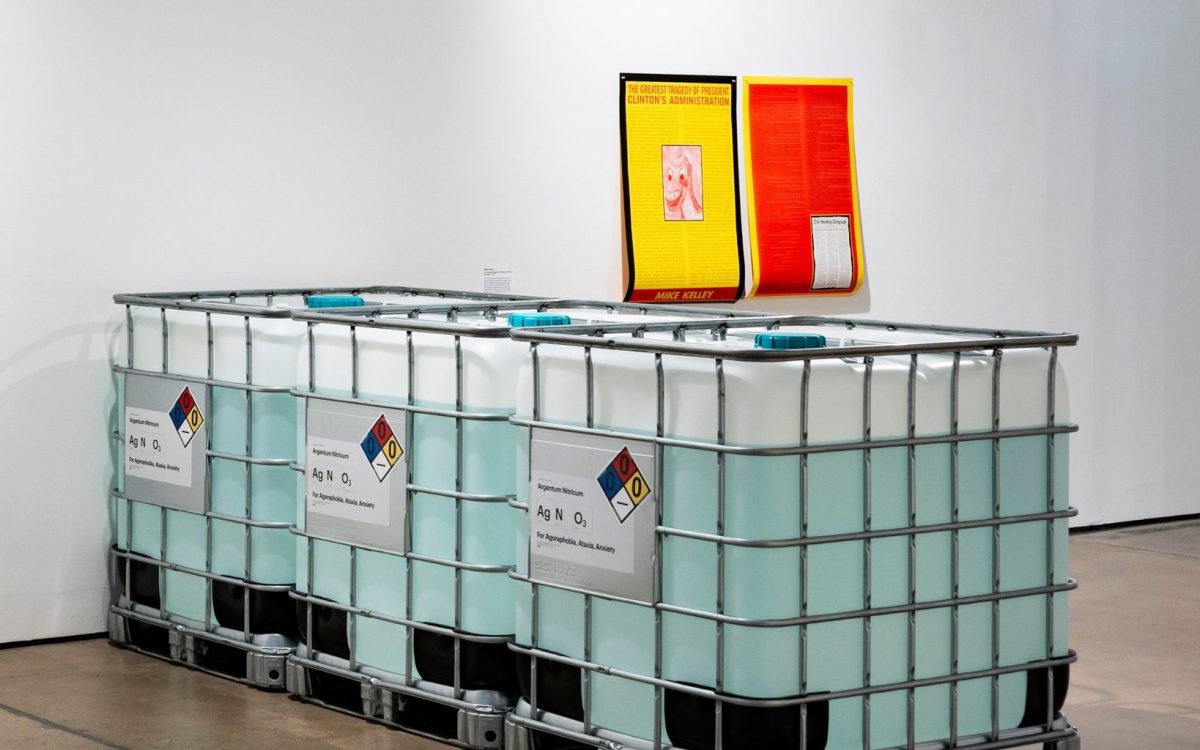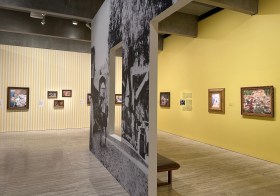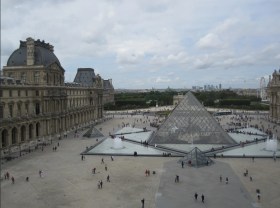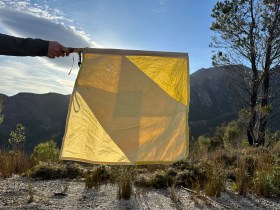The idea of care usually induces a warm fuzzy feeling of soft blankets and a soothing cup of tea. But Duty of Care at the Institute of Modern Art (IMA) turns to its ugly side, looking at the hollow promise that results when the word is thrown around without consequence.
The exhibition is devised in two parts, with Part One at the IMA until 22 September and Part Two to open at Griffith University Art Museum from 15 August. It includes curatorial contributions from IMA Director Robert Leonard, Director of Griffith University Art Museum Angela Goddard and Stephanie Berlangieri, who construct a robust framework for viewers to critically examine the concept of care beneath its compassionate façade.
Duty of Care feature works from an influential line-up of international, Australian and Aotearoa New Zealand artists, such as Mike Kelley, a core member of the Conceptual Art movement of the 1960/70s; Teresa Margolles, who worked as a mortician in a 1990s Mexico City ridden with gang violence; Dane Mitchell, Aotearoa New Zealand representative at the 58th Venice Biennale; British social artist, composer and performer, Martin Creed; and Polish filmmaker, Artur Żmijewski.
While dealing with heavy and at times confronting subjects, the exhibition welcomes viewers through HOSSEI’s uplifting visual album THUNDERBLOOM (2023) with songs written by the artist’s mother, Nahid. Even as singers lyrically perform the list of Nahid’s daily medications, the work provides the grounds for collaborative healing and hope.
The complex entanglement of human relationships is exemplified in Cassie Thornton’s social experiment, The Hologram (2023) and Leigh Ledare’s The Task (2017), a documentary of a three-day Group Relations Conference in Chicago. Thornton’s The Hologram proposes a peer-to-peer, non-expert model of healthcare that positions participants as both the caregiver and the receiver, thus fostering a triangle of reciprocation and mutual responsibility. Meanwhile, Ledare and his camera crew capture interactions between 28 participants, who were given an ambiguous brief aimed at prompting introspection, but the result is a trudge through petty conflicts.
With starkly different dynamics – the former, a safe space of transparent and reciprocal care; the latter, a messy web of frustration and drama evoking that of a reality show – the two pieces bring into focus the spectrum of care in a collective context, while raising the question of intention.
The intention of care feels like an underlying through line in the exhibition, exemplified in the capitalist virtue signalling of Oliviero Toscani’s controversial campaigns for Italian knitwear brand, United Colors of Benetton in the 1990s. AIDS: David Kirby (1992) dominates one wall inside the IMA, its larger-than-life presence depicts the AIDS victim with one foot in the grave, but his face appearing to embody that of Christ-like serenity.
The photo was originally captured by journalism student Therese Frare, who obtained permission from Kirby to be photographed under the condition that she would not use it for personal gain. While Toscani’s colourised reappropriation of the image sparked heated debate and backlash, Kirby’s family agreed to the advertisement as a way of raising awareness of the AIDS epidemic.
Margolles’ Lengua/Tongue (2000) presents a similar moral minefield. The preserved human tongue in the photo comes from the body of a young Mexican gang member, who died during a street fight and whose family were too poor to bury their kin. Margolles offered to bury him free of charge in exchange for his tongue, which has since been photographed and even physically displayed as an artwork.
It’s an uncomfortable piece to look at and a mental exercise to untangle, as are many of the pieces in Duty of Care. Michael Parekōwhai’s toy-like sculpture titled Acts II (1994), in reference to the fifth book of the New Testament, symbolically dissects the history of colonialism through tools that could be useful, signal cultural importance or induce violence.
Some artists come up with pseudo-solutions for our contemporary wellbeing crisis, from Mitchell’s Remedy for Agoraphobia, Ataxia, Anxiety (AgNO3) (2016), a quick-fix tonic in tubs of industrial scale, to Kelley’s The Greatest Tragedy of President Clinton’s Administration (1999), where the artist proposes ‘state-sponsored sex clinics staffed by elite celebrities to treat mass sexual repression across the United States’.
While these are easily recognised as satire rather than a beacon of hope, the utopian matriarch created by Tabita Rezaire in Amakaba: A Vision for Collective Healing (2021) feels too good to be true. Amakaba is an operating collective in the artist’s ancestral home of French Guiana and, yet, the language of such healing centres has been so heavily exploited by wellness scams and even cults that it automatically triggers suspicion and distrust.
Duty of Care is a reflection of our collection psyche as much as it is a presentation of artworks. Is our society still redeemable under current circumstances, or does it require a complete, near impossible, rewrite? Part One of the exhibition edges dangerously close to a depressing conclusion.
Read: Exhibition review: Built Photography, MAPh
Even so, the show is refreshing in its rigour and boldness – something increasingly rare to come by when many prioritise celebration over criticism and fail to look underneath the rock.
For those who are planning to visit the IMA, drop by next door to Outer Space where Amanda Bennetts’ Stealth Care: Wellness from the Algorithm (until 3 August) forms an interesting counterpart. Bennetts’ research-based installation is imbued with a measured dash of quirk, and extends the investigation of care through her own lived experience of a progressive neurological disease and a rare muscular disease.
Duty of Care – Part One is on view at the IMA in Brisbane until 22 September; free.





